Data manipulation enhances “climate change” in Australia

 This blogpost comes from articles by the Australian biologist Dr Jennifer Marohasy. The previous post, “There is no climate crisis in Australia”, also came from Dr Marohasy.
This blogpost comes from articles by the Australian biologist Dr Jennifer Marohasy. The previous post, “There is no climate crisis in Australia”, also came from Dr Marohasy.
It could be that the last 26-years of temperature recordings by the Australian Bureau of Meteorology (BOM) will be found not fit for purpose and will eventually need to be discarded. This would make for a rather large hole in the calculation of global warming – given the size of Australia. (more…)
The religion of climate change

 This blogpost comes from an interview of Michael Shellenberger, who is an environmentalist, commentator, author and an advocate for pragmatic solutions to climate change.
This blogpost comes from an interview of Michael Shellenberger, who is an environmentalist, commentator, author and an advocate for pragmatic solutions to climate change.
Summary
I accept the core science of climate change, but not the alarmism because climate change is gradual and manageable, and not catastrophic. There is no climate crisis or climate emergency. That’s a corruption of the science. For example, sensational scenarios are fraudulent and scare tactics. (more…)
Climate: the movie

Do you know why climate change is mentioned so much today, even though none of us can detect it in our lifetime? (more…)
A reminder for the BOM – Weather is not climate

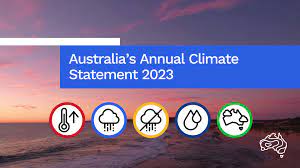 The Australian Annual Climate Statement 2023 was issued by the Bureau of Meteorology (BOM) recently. It includes information on temperatures, rainfall, water, oceans, sea ice, and significant weather events in 2023. (more…)
The Australian Annual Climate Statement 2023 was issued by the Bureau of Meteorology (BOM) recently. It includes information on temperatures, rainfall, water, oceans, sea ice, and significant weather events in 2023. (more…)
A reminder for the WMO – Weather is not climate

 The state of the global climate 2023 report was issued by the World Meteorological Organization recently (WMO). It includes information on greenhouse gases, global temperatures, ocean heat content, sea level, ocean temperatures, ice sheets, glaciers, sea-ice, and precipitation. (more…)
The state of the global climate 2023 report was issued by the World Meteorological Organization recently (WMO). It includes information on greenhouse gases, global temperatures, ocean heat content, sea level, ocean temperatures, ice sheets, glaciers, sea-ice, and precipitation. (more…)
Long-range weather prediction failure

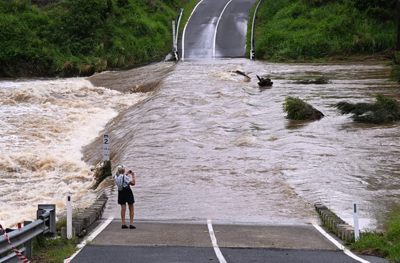 What’s happened to the El Niño that experts warned earlier could mean warmer and drier weather and increased bushfire risk for much of Australia this summer? The Australian Bureau of Meteorology (BOM) declared the El Niño in September 2023, three months after US weather agency NOAA and two months after the UN’s World Meteorological Agency. The El Nino weather cycle is often linked to hotter and drier springs and summers for Australia, but the torrential and damaging storms and floods on the east coast in recent weeks have been anything but dry. (more…)
What’s happened to the El Niño that experts warned earlier could mean warmer and drier weather and increased bushfire risk for much of Australia this summer? The Australian Bureau of Meteorology (BOM) declared the El Niño in September 2023, three months after US weather agency NOAA and two months after the UN’s World Meteorological Agency. The El Nino weather cycle is often linked to hotter and drier springs and summers for Australia, but the torrential and damaging storms and floods on the east coast in recent weeks have been anything but dry. (more…)
Weather and climate

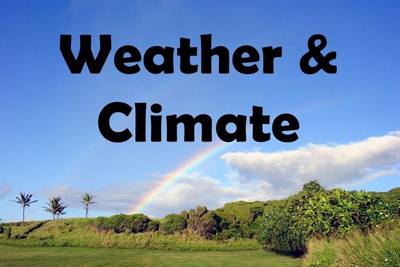 Weather change is not climate change
Weather change is not climate change
Did you know that most of the examples of climate change presented by the United Nations, politicians, government agencies and the news media are weather and not climate? This means that they are either don’t know the difference or they exploit the ignorance of the public. These examples are not climate change at all. I have pointed this out before. (more…)
Testing climate science

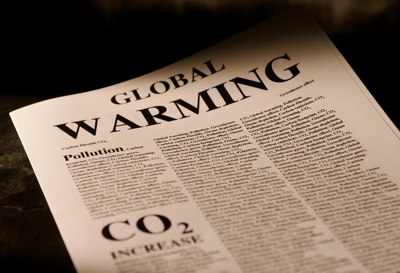 Many actions proposed to address climate change threaten our way of life. But some of the “facts” used to justify these actions are misleading.
Many actions proposed to address climate change threaten our way of life. But some of the “facts” used to justify these actions are misleading.
This post comes from interviews with Dr Steven Koonin (Appendix A) over the six past months. It addresses claims that there is a climate emergency or climate crisis because of dangerous climate change caused by increased emissions of greenhouse gases from the use of fossil fuels. (more…)
Questions and answers about Genesis – Part 2

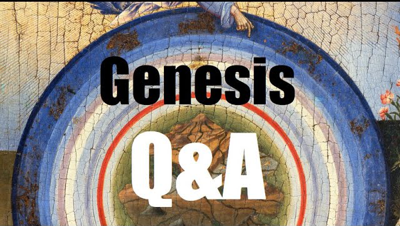 The Bible gives a selective history of the earth from its creation to its demise. Many question this. Did you know that there are answers to your questions? Here’s the answers to some questions that were asked recently.
The Bible gives a selective history of the earth from its creation to its demise. Many question this. Did you know that there are answers to your questions? Here’s the answers to some questions that were asked recently.
This post is based on questions and answers after a presentation by Dr Tas Walker of Creation Ministries International (CMI). (more…)
Can we change the climate?

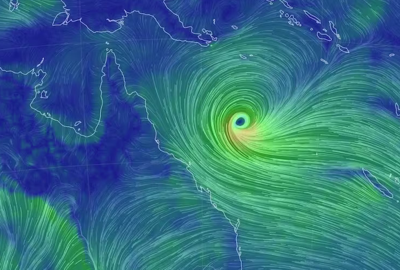 Recent floods in far north Queensland took everyone by surprise. It was quite scary, because it happened very quickly. Water started rapidly rising — seemingly out of nowhere. Most people thought that there may be a lot of rain when cyclone Jasper passed but there was no warning that there was going to be millions of litres of water tumbling down the Tableland hill, pushing houses and land to the side. Cars were floating past the house. It was mayhem. (more…)
Recent floods in far north Queensland took everyone by surprise. It was quite scary, because it happened very quickly. Water started rapidly rising — seemingly out of nowhere. Most people thought that there may be a lot of rain when cyclone Jasper passed but there was no warning that there was going to be millions of litres of water tumbling down the Tableland hill, pushing houses and land to the side. Cars were floating past the house. It was mayhem. (more…)
The politics of climate alarmism

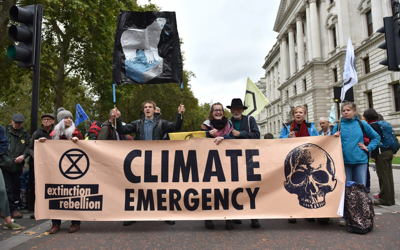 The story behind the “climate crisis”
The story behind the “climate crisis”
Do you remember the story of the emperor’s new clothes? The emperor was persuaded by a tailor that he could make him a grand set of clothes which could only be seen by the really intelligent. When this invisible set of (non-existent) clothes were put on, everyone wanted to appear intelligent and so they commented about how grand and beautiful they were. Until one small boy shouted out in the crowd “the emperor is naked. He has no clothes”! And then the truth became obvious to everyone. The climate emergency is like the emperor’s clothes. It doesn’t exist. There is no climate emergency. (more…)
Weather fact check: Deaths

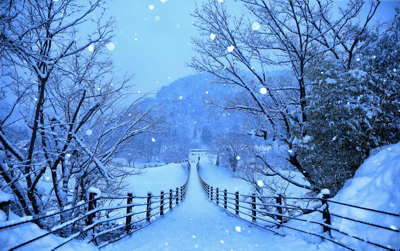 Exposure to cold or hot temperatures is associated with premature deaths. Recently I read that “Extreme heat in the United States is the number one weather-related cause of death”. Is this true? (more…)
Exposure to cold or hot temperatures is associated with premature deaths. Recently I read that “Extreme heat in the United States is the number one weather-related cause of death”. Is this true? (more…)
Weather fact check: Wildfires

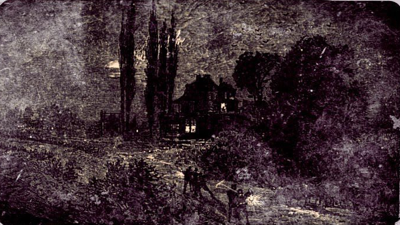 This post comes from Dr Jay Wilde.
This post comes from Dr Jay Wilde.
There are many politicians and media figures (as well as a few scientists) who are desperately trying to convince us that global warming (aka “climate change”) is a dire problem that requires radical action right now. One of their most effective tools is to discuss a current event as if nothing like it has ever happened before. That way, they can blame it on climate change. This works, in part, because history education is so poor that most people don’t know what happened in the past. (more…)
Todays’ weather brought to you by God

 Tsunamis, floods, and bush fires are no joke. In 2021 it was estimated by Deloitte that natural disasters cost Australia over $38 billion a year and this will nearly double by 2060. The real cost, however, is more than a financial one, many people and animals lose their homes and even their lives when a major disaster strikes.
Tsunamis, floods, and bush fires are no joke. In 2021 it was estimated by Deloitte that natural disasters cost Australia over $38 billion a year and this will nearly double by 2060. The real cost, however, is more than a financial one, many people and animals lose their homes and even their lives when a major disaster strikes.
So what should we think about the weather? Is God really in control? Most of us are comfortable asking God for good weather for our next sports game or outdoor event – we may even thank God for a perfect sunny day. But when it comes to bad weather, who’s to blame – infamous weather systems like El nina or God? And who can we go to about these disasters? (more…)
The real climate change

 Weather change is not climate change
Weather change is not climate change
“Climate change” is mentioned often today in a context that means “weather change”. There is a difference between weather and climate. Climate is the long-term weather pattern. Weather influences what clothes you wear on a given day, while the climate influences the contents of your entire wardrobe. (more…)
A robust climate?

 “By not doing enough to fight global warming, we’re trashing the planet” says National Geographic magazine. “How hot can it get before truly catastrophic changes are set in motion?”. And Wikipedia warns of “abrupt climate change as it approaches and surpasses 2°C above pre-industrial levels”. It also mentions the possibility of “accelerated global warming”, “runaway climate change”, “climate collapse” and “climate apocalypse”. Others mention a “climate emergency”, “climate crisis”, “climate breakdown”, “irreversible climate destabilization”, “abrupt and irreversible environmental changes” and “interconnecting calamities”. That’s alarmist. It’s creating a culture of fear and panic. And climate change is blamed for any extreme weather. But are these warnings justified? (more…)
“By not doing enough to fight global warming, we’re trashing the planet” says National Geographic magazine. “How hot can it get before truly catastrophic changes are set in motion?”. And Wikipedia warns of “abrupt climate change as it approaches and surpasses 2°C above pre-industrial levels”. It also mentions the possibility of “accelerated global warming”, “runaway climate change”, “climate collapse” and “climate apocalypse”. Others mention a “climate emergency”, “climate crisis”, “climate breakdown”, “irreversible climate destabilization”, “abrupt and irreversible environmental changes” and “interconnecting calamities”. That’s alarmist. It’s creating a culture of fear and panic. And climate change is blamed for any extreme weather. But are these warnings justified? (more…)
What about climate change?


Roy Morgan’s 2019 survey found that Australians regard environmental concerns as the major problem facing the world. This included climate change, water conservation, pollution, rubbish, famine, and cutting down rainforests. And economic concerns came next.
What does the Bible say about the natural environment? Should Christians care for the environment, or doesn’t it matter?
Biblical worldview
This post looks at the natural environment from an understanding based on the Bible, which is God’s message to us. This leads to different understandings compared to if we reject what the Bible says. It’s a theistic viewpoint, not an atheistic one. The Bible says that the universe was formed miraculously by God’s command (Ps. 33:6-9). People can look at the same world, but their interpretation depends on their worldview. It’s like wearing glasses. For example, clear glasses give a brighter view than sunglasses. (more…)
Life in the Ice Age

 Scientists believe that the Earth goes through cycles of climatic change. Periods of lower temperatures are assumed to result in long-term periods of glaciation, which are known as an ‘Ice Age’. As the causes proposed for these Ice Ages seem to be deficient, there is reason to believe that there was only one Ice Age.
Scientists believe that the Earth goes through cycles of climatic change. Periods of lower temperatures are assumed to result in long-term periods of glaciation, which are known as an ‘Ice Age’. As the causes proposed for these Ice Ages seem to be deficient, there is reason to believe that there was only one Ice Age.
This post is based on a children’s book by Hughes and Cosner (2018).
Was there really an Ice Age?
Evolutionists say that there have been many Ice Ages throughout history (Appendix A). Actually there was only one Ice Age, and it was caused by Noah’s Flood. Though the Flood lasted only one year, its effects on the climate lasted for centuries! Hot underground water was a major source of Flood waters, so even after they retreated back into the oceans, the water stayed warm. Also, massive volcanic eruptions would have poured ash into the air, which blocked out much sunlight over the land. So the land would have been much cooler. Then some of the warm water evaporated into clouds which then dropped much snow over the cold land. Over centuries, this packed into huge ice sheets covering a third of earth’s land. We can even see the effects the snow and ice had on the earth today; the ice at the North and South Poles is left over from this (about 10% of the earth is covered in ice); the alpine glaciers; and the glacial landforms and sediments. Because these effects are seen on the current land surface, it is clear that the Ice Age occurred after the Flood. (more…)



 This blogpost comes from an interview of the Australian biologist
This blogpost comes from an interview of the Australian biologist  A different kind of Christmas message
A different kind of Christmas message



RECENT COMMENTS